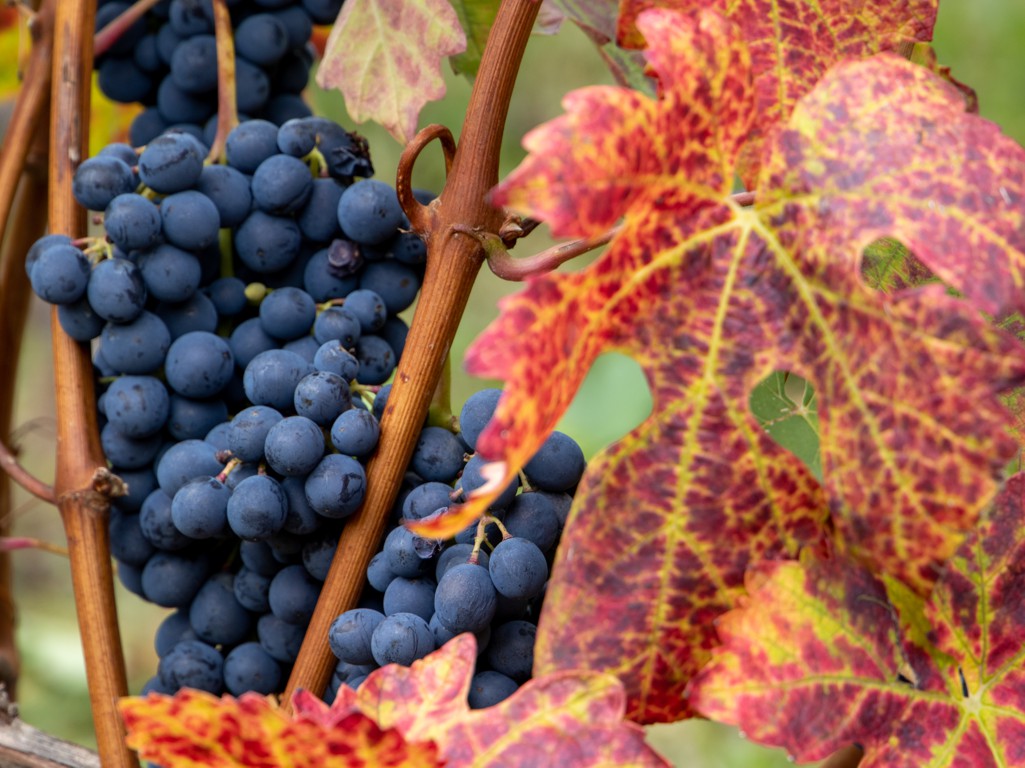What is the difference between Nebbiolo and Barolo?
Nebbiolo is one of the indigenous grape varieties of Piedmont and represents one of the most precious treasures of the Langhe region—a land that is tough and resource-scarce but perfect for growing vines. The slopes of our hills, even the steepest ones like those of our Gramolere vineyard, can optimally nourish the vines. Depending on the exposure and altitude, they host different grape varieties.
In addition to Nebbiolo, other high-quality grape varieties are present in the Manzone Giovanni vineyards: Barbera, Rossese, and Dolcetto, from which we produce highly appreciated wines such as Barbera d’Alba Superiore la Marchesa DOC, Dolcetto d’Alba le Ciliegie DOC, and Langhe Rossese Bianco Rosserto DOC.
Non c’è dubbio, però, che la nostra azienda vinicola sia soprattutto nota per la produzione di Barolo, un vino corposo, ricco e molto complesso che assume note differenti a seconda dei terreni da cui provengono le uve con cui si produce. Per questo motivo i Barolo di Giovanni Manzone sono di quattro tipi differenti:
However, there is no doubt that our winery is best known for the production of Barolo, a full-bodied, rich, and very complex wine that takes on different notes depending on the soils from which the grapes are produced. For this reason, Giovanni Manzone’s Barolo come in four different types:
So, what is the difference between Nebbiolo and Barolo? Let’s start with a basic distinction: Nebbiolo is a grape variety, while Barolo is one of the wines that can be produced using Nebbiolo grapes.
How does Nebbiolo become Barolo?
Not all Nebbiolo grapes, however, become Barolo wine. First of all, to make Barolo, you must be in a well-defined territory, which corresponds to the municipalities of Barolo, Castiglione Falletto, and Serralunga d’Alba, with the addition of parts of the territories of Verduno, Cherasco, La Morra, Monforte d’Alba, Roddi, Diano d’Alba, Novello, and Grinzane Cavour.
The territory is crucial for two reasons: the Nebbiolo grapes used to make Barolo must have been grown in the production area, and the production process must also take place entirely within this territory. These two conditions ensure that when you purchase a bottle of Barolo DOCG, you have a wine with unique characteristics, which has earned it the title: “the king of wines and the wine of kings.”
The exclusivity of this excellent wine is not limited to the territory where Nebbiolo is grown and where the grapes are vinified, but also to the exposure to the sun and the altitude of the vineyards whose fruits can become Barolo.
As mentioned, not all Nebbiolo can be used to make Barolo, but all Barolo wine is made from 100% Nebbiolo grapes, carefully selected based on the criteria mentioned earlier. To express that only Nebbiolo grapes are used, it is said, technically, that Barolo is obtained by vinifying pure Nebbiolo from the Langhe.
The vinification process for our Barolo requires aging for at least three years in oak barrels to give the wine the intense, persistent, and rich flavors and aromas that have characterized it since its origins in the mid-19th century. This is a minimum requirement, which can be exceeded to obtain an even more full-bodied and surprisingly intense wine, such as our Barolo Gramolere Riserva DOCG, which ages in barrels for five years.
What Happens to Nebbiolo That Does Not Become Barolo?
As previously mentioned, not all Nebbiolo from the Langhe becomes Barolo, but this does not necessarily mean it is of lesser quality. We can simplify by saying that Nebbiolo grown in vineyards with less optimal exposure and altitude has less intense characteristics and thus produces a less full-bodied and rich wine.
Staying within the vineyards of Azienda Giovanni Manzone, within the Additional Geographical Mention Gramolere, there is an old country house, the Crutin, whose vineyards, purchased by us in 2001, produce a good Nebbiolo from which we make Langhe Nebbiolo il Crutin DOC.
The difference between Barolo and Nebbiolo lies not only in the selection of grapes from vineyards with specific sun exposure and altitude but also in the vinification process. Our Langhe Nebbiolo il Crutin DOC, for example, is a delicate and juicy wine, hand-harvested with a brief maceration period that keeps the fruits crisp. It then undergoes barrel and tank aging and hits the market about a year and a half after harvest.
Our Barolos, on the other hand, are available for sale five years after the harvest, which clearly explains the difference in body and intensity between the two wines, both derived from the same grape variety and the same territory.
Nebbiolo grapes are undeniably our treasure, the reason we have been working for generations in our lands, and from which we produce Manzone Giovanni Barolo DOCG with its typical varieties, characterized by different but all rich and intense aromas and flavors.


